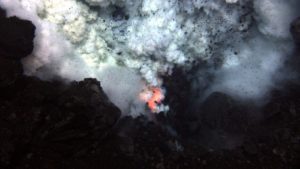
LOUISIANA STATE UNIVERSITY—LSU College of the Coast & Environment Distinguished Professor Emeritus John Day has collaborated with archeologists on a new analysis of societal development. They report that over the past 10,000 years, humanity has experienced a number of foundational transitions, or “bottlenecks.” During these periods of transition, the advance or decline of societies was related to energy availability in the form of a benign climate and other factors.
“Studying the factors that led to the advancement and contraction of past societies provides insight into how our globalized society might become more or less sustainable,” Day said.
Day’s collaborators include Joel Gunn of the University of North Carolina at Greensboro, William Folan of the Universidad Autonoma de Campeche in Mexico and Matthew Moerschbaecher of the Louisiana Oil Spill Coordinators Office. Gunn and Folan are Mayan archeologists and Moerschbaecher is a graduate of LSU’s oceanography program.
With the human population having exceeded the capacity of Earth’s resources, this analysis suggests that a transition toward sustainability for the current energy-dense, globalized industrial society will be very difficult if not impossible without dramatic changes.
The authors say that these past transitions were caused by a combination of social, astronomical and biogeophysical events such as volcanic eruptions, changes in solar emissions, sea-level rise and ice volume, biogeochemical and ecological changes, and major social and technological innovations. One example is the worldwide crisis that began in 536 AD, which was caused by three major volcanic eruptions within a decade. This event led to the destruction of half the population of Europe via the Black Death plague, starvation and wars. In China and the Mayan region, it led to crop failures, famine and plagues.
They found that when energy was abundant, societies expanded and prospered. Conversely, when energy sources declined, there was societal contraction and collapse. The previous example implies that changes are more likely to transpire due to planetary-scale disturbances and constraints, whether societal or environmental, and will likely lead to strong societal disruptions.
However, in the past, major changes sometimes moved toward a more sustainable social organization. For example, after one disruption, the ancient Maya switched to a more efficient use of energy and marine transportation and, at the time of European contact, they were leading a sustainable lifestyle.
_______________________________

Volcanic eruptions impacted ancient civilizations beyond the general destruction that occurred. Wikimedia Commons
_______________________________
Source: Louisiana State University news release
If you liked this article, you may like The Milpa Way, an article about how the ancient Maya achieved a sustainable living.


